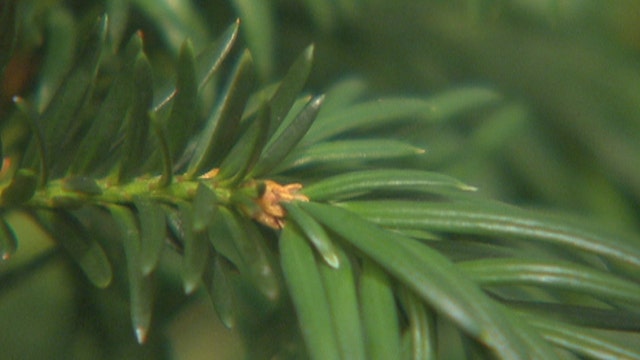Chemotherapy from a plant?
Pacific yew looks like a shrub you might find in your front lawn, but it’s much more than just a decorative plant. The Medicine Hunter, Chris Kilham, visits the New York Botanical Garden to find out how this plant is helping to fight cancer
When USDA botanist Arthur Barclay collected a sample of bark from the Pacific yew tree in Washington State in 1962, he had no way of knowing that the sample would yield one of the most important cancer-fighting drugs ever developed. One of many botanists commissioned by the National Cancer Institute (NCI) to collect parts of plants for testing as possible anti-cancer agents, Barclay personally collected more than 200 species for analysis. Among those samples, only the Pacific yew Taxus berevifolia, would contain a blockbuster pharmaceutical hit.
In May of 1964, scientists tested the various samples collected by USDA botanists and discovered a cytotoxic compound in the Pacific yew sample collected by Barclay. Subsequent to that discovery, researchers Monroe Wall and Mansukh Wani, both working in a NCI drug discovery program in North Carolina, screened fresh Pacific yew samples and isolated a previously unknown, highly active cancer-fighting compound. In 1967, that compound was named Taxol.
The road from the initial discovery of Taxol and its launch for the treatment of various cancers was a long one. After the first isolation of Taxol from the bark of the yew, researchers began to collect much more materila. Amounts of Taxol found in the bark are so tiny that it took over two tons of bark to yield just 10 grams of pure material.
By collecting large amounts of bark from the trees, the trees died. Researchers determined early that collecting enough Taxol from the bark of the Pacific yew to yield a viable drug would quickly wipe out the species, putting an end to the whole development process. A calculation by NCI’s Gordon Crag determined that 360,000 mature yew trees per year would be required for production. This was completely out of the question.
To get around the problem of a non-sustainable supply, various teams of researchers in France, Florida and New York threw themselves at synthesizing Taxol. Eventually the company Phyton Biotech based out of Ithaca, New York solved the problem by developing a method that produces Taxol through a technique involving cell fermentation. Today, all commercial Taxol is made by this method, and none is derived from the bark of the Pacific yew.
In 1984, NCI began clinical trials on Taxol. Their studies showed significant improvement in cases of melanoma and ovarian cancer. Eventually NCI needed a commercial partner to bring Taxol to market. Among four companies that expressed interest, Bristol-Myers Squibb was selected to commercialize the drug. In 1992, the company received approval to market Taxol as a chemotherapy drug.
Today Taxol, also known as Paclitaxel, is marketed under the brand names Abraxane and Onxol. It is used to treat ovarian and breast tumors, lung cancer, and Kaposi’s sarcoma. The drug is harsh, causing negative effects that include nausea, vomiting, pain in the joints, loss of hair, abnormal bowel function, dizziness, exhaustion, skin rash, chest pain, female infertility, fever and chills. Despite the almost guaranteed pain and discomfort, Taxol is the bestselling anti-cancer drug in all of history, with annual sales topping $1.6 billion, according to NCI.
Botanists often start the chain of drug discovery, coming upon plants and parts of plants that yield compounds which ultimately turn into life-saving drugs. And while the production of Taxol, the gigantic pharmaceutical success story, is now accomplished by sophisticated manufacturing methods in sterile conditions, it all started with one man prying bark off of a tree in the woods.





















